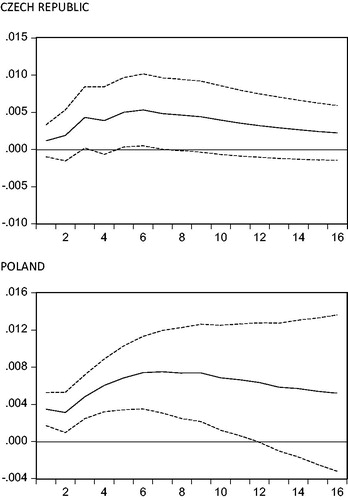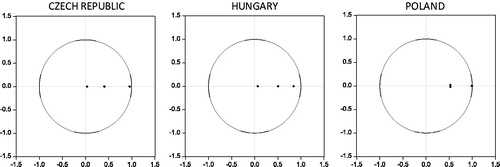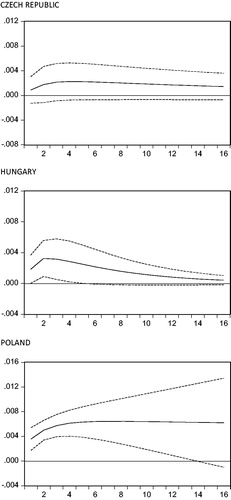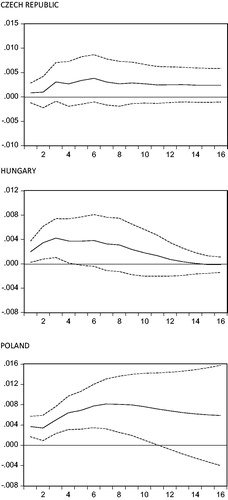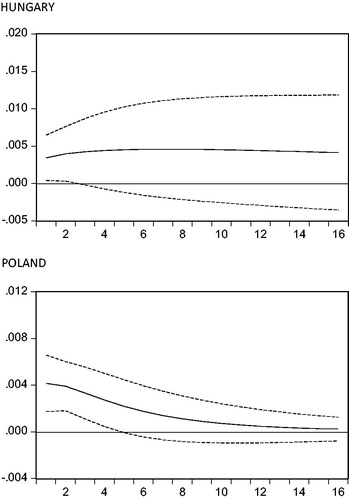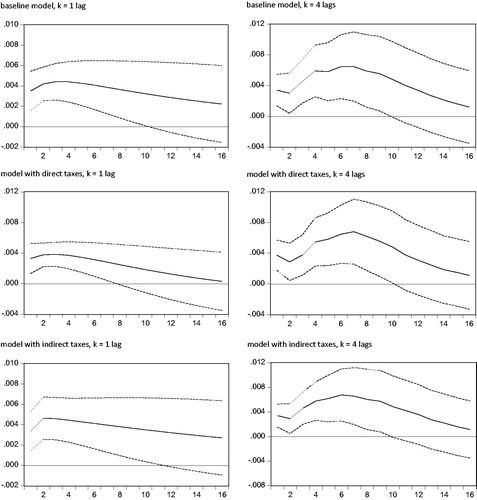Figures & data
Table 1. Spending multipliers: baseline model with k = 1 lag.
Table 2. Spending multipliers: baseline model with k = 4 lags.
Table 3. Peak spending multipliers for Poland; specifications without the ‘crisis’ dummy variable.
Table A1. Unit root test for variables (data in log).
Table A2. Lag length criteria for the baseline model.
Table A3. Elements of A and B matrices for the baseline model.
Table A4. Elements of A and B matrices – model with direct taxes, k = 1 lag.
Table A5. Elements of A and B matrices – model with direct taxes, k = 4 lags.
Table A6. Elements of A and B matrices – model with indirect taxes, k = 1 lag.
Table A7. Elements of A and B matrices – model with indirect taxes, k = 4 lags.
Table A8. Elements of A and B matrices – the baseline model with 4 lags.
Table A9. Elements of A and B matrices – subsample since 2007.
Table A10. Peak multipliers (adjusted to be interpreted in the national currency) in robust system specifications.
Table A11. Elements of A and B matrices, the additional SVAR specification for Poland.
Figure A3. Impulse responses of Y to structural one s.d. shock in G ± 2 s.e., model with direct taxes, k = 1 lag.
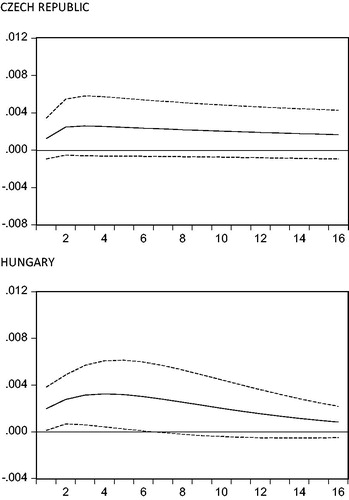
Figure A4. Impulse responses of Y to structural one s.d. shock in G ± 2 s.e., model with direct taxes, k = 4 lags.
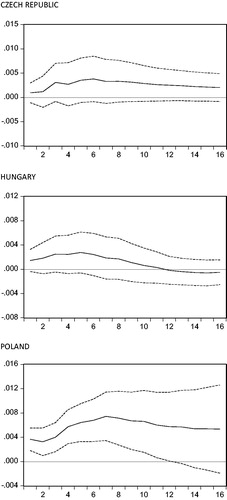
Figure A5. Impulse responses of Y to structural one s.d. shock in G ± 2 s.e., model with indirect taxes, k = 1 lag.
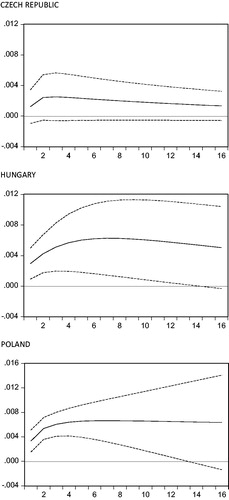
Figure A6. Impulse responses of Y to structural one s.d. shock in G ± 2 s.e., model with indirect taxes, k = 4 lags.
